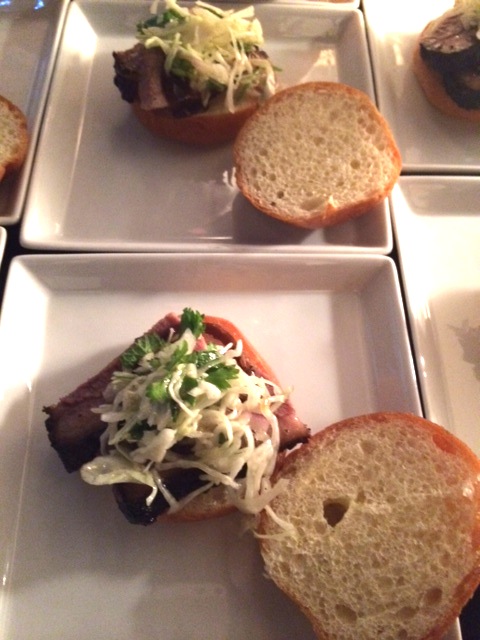
Last week, Philadelphia welcomed in a new museum that’s really fitting for its location in Old City district – the Museum of the American Revolution. For work, I got to see a pre-opening preview of the museum and spent some time revisiting locations significant to our nation’s founding.
During our country’s Colonial days, Philadelphia was a big deal. In what’s now the Historic District, which Old City belongs to, there are buildings still standing from that era and plaques marking areas where once located structures once have their respective ties to our legacy. But it’s not all history here in Old City. This neighborhood’s present-day scene is really buzzing with restaurants, nightlife, and galleries.
Here are my suggestions for exploring Old City.
First, check out these museums and attractions.

Museum of the American Revolution
As a 2.0 American history lesson, this redbrick building goes beyond dates and facts. It’s designed to bring visitors directly into the growing conflicts that would have the 13 British colonies deciding to break away from English rule and develop a new republic. And, of course, there are many sides to the story. In a chronological format, the museum delves into not just the main characters like General George Washington, but also other individuals whose voices often may be overlooked – women, freed and enslaved African peoples, and the Native American Oneida nation. Artifacts are on view too. In particular, see Washington’s headquarters tent that’s enclosed in a glass casing – where he made crucial battlefield decisions.

The President’s House and Liberty Bell
Maybe you know this already or you don’t. Before the White House was built in and D.C. would become our nation’s capital, our country’s first two Presidents George Washington and John Adams resided in Philadelphia. While their presidential home – known now as The President’s House – is long gone, an outdoor display marks its spot where you learn about the African Americans who served Washington and his family. Adjacent to this area, take the time to view the Liberty Bell. It once was a working bell, before getting its now signature crack, and has become a symbol for civil rights.

Benjamin Franklin Museum
Most of what we think of this Founding Father is from his later years in life. But he’s got his place in our history, and it’s definitely noted. With fun videos and well-described objects, this museum is based on a lower level of a building and tells overall about his life story. For example, Franklin is actually not originally from Philly, came to live here at a young age and went on to be prosperous and influential. Afterward, head to Christ Church Burial Ground, where he’s buried and find coins placed on top of his tombstone.

Independence Hall
You need to walk over to the Independence Visitor Center first to get your timed entrance ticket to visit the interior of this landmark and step into the room where the Declaration of Independence was signed. While waiting in line for your turn inside the East Wing, go visit the West Wing to view original copies of documents like um…. the Declaration of Independence.
Now, as for dining, here we go. My picks include:

– 2nd Story Brewing: This brewery/restaurant/ bar was started by a local farmer (who still owns it) and her beer-brewing son-in-law, with bar grub that’s healthy too (as shown here).
– The Little Lion, located right across from the Museum of the American Revolution, centers on fine, Southern-inspired comfort food with brunch, lunch, and dinner selections within a casual setting.
– Zahav, an Israeli restaurant featuring small plates, tasting menus, hummus and other traditional dishes with a modern twist, and an at-the-bar happy hour specials like half-off on hummus.
– Khyber Pass Pub: This dive-looking, dark wooden interior bar with a side gastropub is touted for its Southern food and beer selection plus has vegetarian-friendly options. Some unique choices include popcorn that can suit vegans or carnivores (the latter version features bacon grease).
– Han Dynasty: The Old City location of this chain does a contemporary yet still authentic take on Sichuan cuisine. One of their best dishes is their Dan Dan Noodles, and you’re given a choice on the spice level by calling out a number.
– Fork: This sophisticated New American restaurant that’s said to have jump-started Old City’s restaurant scene about 15-20 years ago. With an elegant interior and a push for seasonal ingredients, lunch/dinner choices can feature handmade pastas and high-end starters.
– The City Tavern: Yes, it can seem touristy with the wait staff dressed in historic attire, but it provides a fun intro to what the Colonials ate and drank with choices based on authentic period recipes.
– The Franklin Fountain: An ice cream parlor bringing you back to the time of soda jerks with bow-tied waiters and quite the list of flavors.
Have you been to Old City? What do you recommend?
Have you been to Old City? What do you recommend?












































